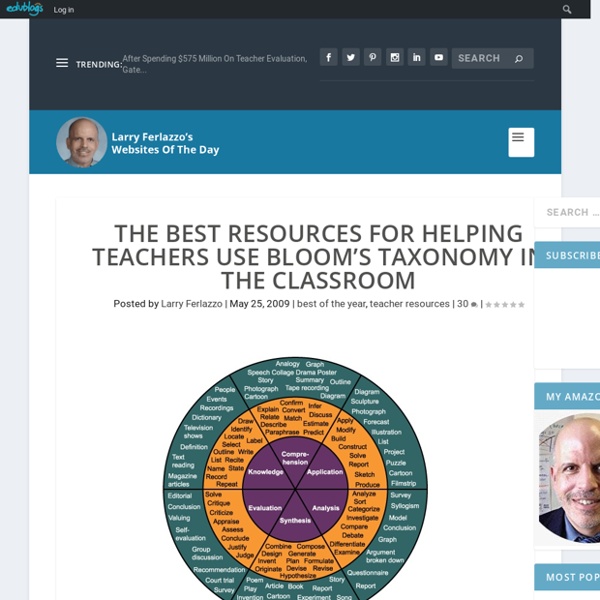Revised Bloom’s Taxonomy – CELT
Jump to the Bloom's Revised Taxonomy Model Go to the Flash version of the Bloom's Revised Taxonomy Model Download the PDF Version A statement of a learning objective contains a verb (an action) and an object (usually a noun). The verb generally refers to [actions associated with] the intended cognitive process. The object generally describes the knowledge students are expected to acquire or construct.
The Padagogy Wheel … it's a Bloomin' Better Way to Teach - In Support of Excellence
When I received the invitation from the new Lee Kong Chian School of Medicine at the Nanyang Technological University in Singapore, I decided to completely upgrade two seminar workshops. Dr Ian Green from the School of Education here at Adelaide and I have used Padagogy101 (introduction to iPad in HE) and Padagogy201 (more advanced use for L&T) to train over 600 faculty from universities in Australia. For Singapore, Ian wasn’t going to be with me and I was solo, as well I needed a better way to leave resources in place for people to revisit.
Bloom's Taxonomy of Learning Domains
Note: This site is moving to KnowledgeJump.com. Please reset your bookmark. Bloom's Taxonomy was created in 1956 under the leadership of educational psychologist Dr Benjamin Bloom in order to promote higher forms of thinking in education, such as analyzing and evaluating concepts, processes, procedures, and principles, rather than just remembering facts (rote learning). It is most often used when designing educational, training, and learning processes. The Three Domains of Learning
50 Ways to Integrate Technology - Ways to Anchor Technology in Your Classroom Tomorrow
Using Free Websites as Learning & Teaching Tools 1. Have students use Spelling City to learn their spelling words, vocabulary words, or site words through games, practice, and quizzes. Spelling City is a free resource for teachers. www.spellingcity.com
Autodesk is giving away free software - New Promotions starting 5/15/11 through 7/15/11 - "Autodesk Reach Higher Promotion" - The Game Changer
Luke posted about this a few days ago and only because his reseller, who will probably get in a lot of trouble for preleasing information, so let's make this official. Autodesk is starting a couple of new promotions starting May 16th running through July 15th. Why July 15th? Because you have a tendancy to wait until the last minute and if it ended on July 31st, it would be chaotic to process all of the orders.
Revised Bloom’s Taxonomy [Flash Version] – CELT
If you have trouble accessing the interactive Flash-based model below, the content is available via: A statement of a learning objective contains a verb (an action) and an object (usually a noun). The verb generally refers to [actions associated with] the intended cognitive process.The object generally describes the knowledge students are expected to acquire or construct. (Anderson and Krathwohl, 2001, pp. 4–5) The cognitive process dimension represents a continuum of increasing cognitive complexity—from remember to create.
5 Highly Effective Teaching Practices
I remember how, as a new teacher, I would attend a professional development and feel inundated with new strategies. (I wanted to get back to the classroom and try them all!) After the magic of that day wore off, I reflected on the many strategies and would often think, "Lots of great stuff, but I'm not sure it's worth the time it would take to implement it all." We teachers are always looking to innovate, so, yes, it's essential that we try new things to add to our pedagogical bag of tricks. But it's important to focus on purpose and intentionality -- and not on quantity.
Definitions of Bloom's Taxonomy
Activities at Various Cognitive Levels of Learning (LoL) Bloom’s taxonomy of learning objectives is used to define how well a skill or competency is learned or mastered. A fuller description of Bloom’s taxonomy is given in the following pages but a brief summary of the activities associated with each level is given below.
How the iPad Is Changing Education
The iPad may only be two years old, but it's already begun to change many things. Reading is one of them. Work is another.



